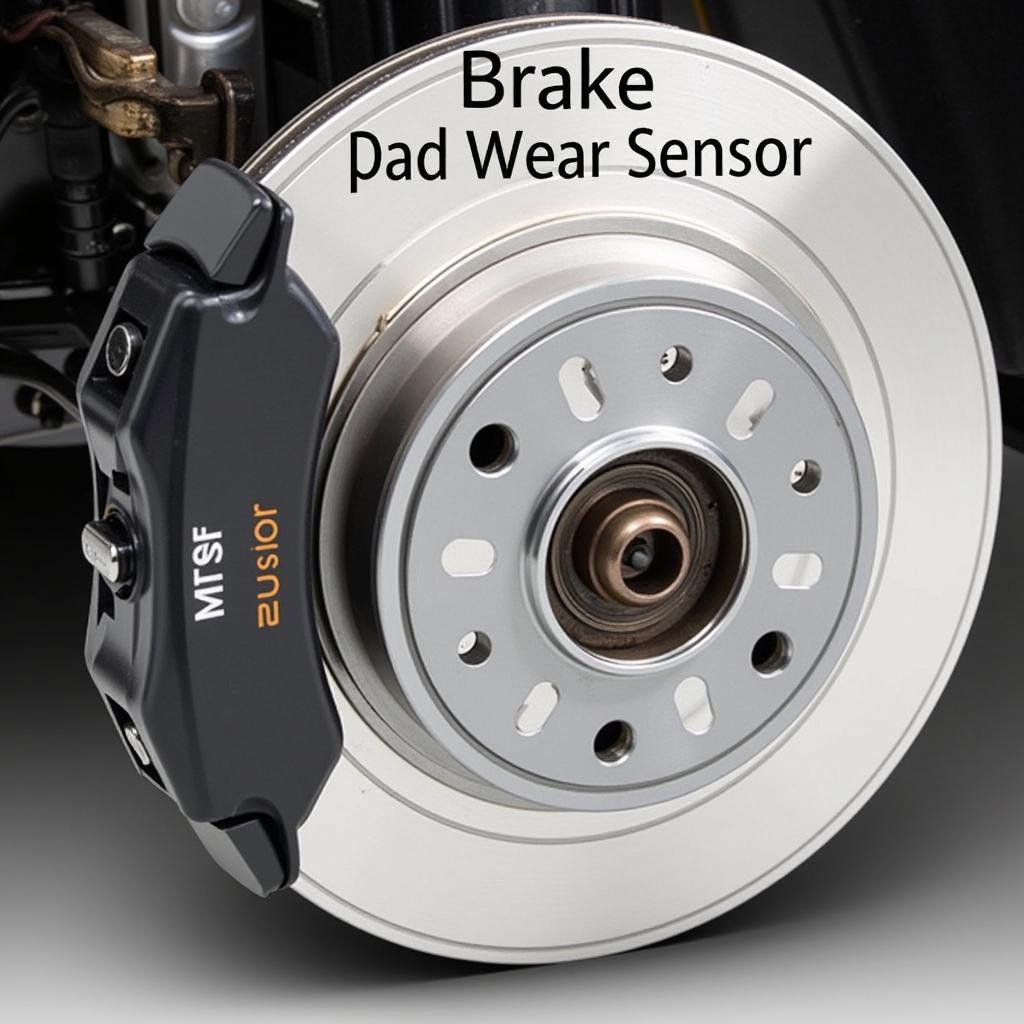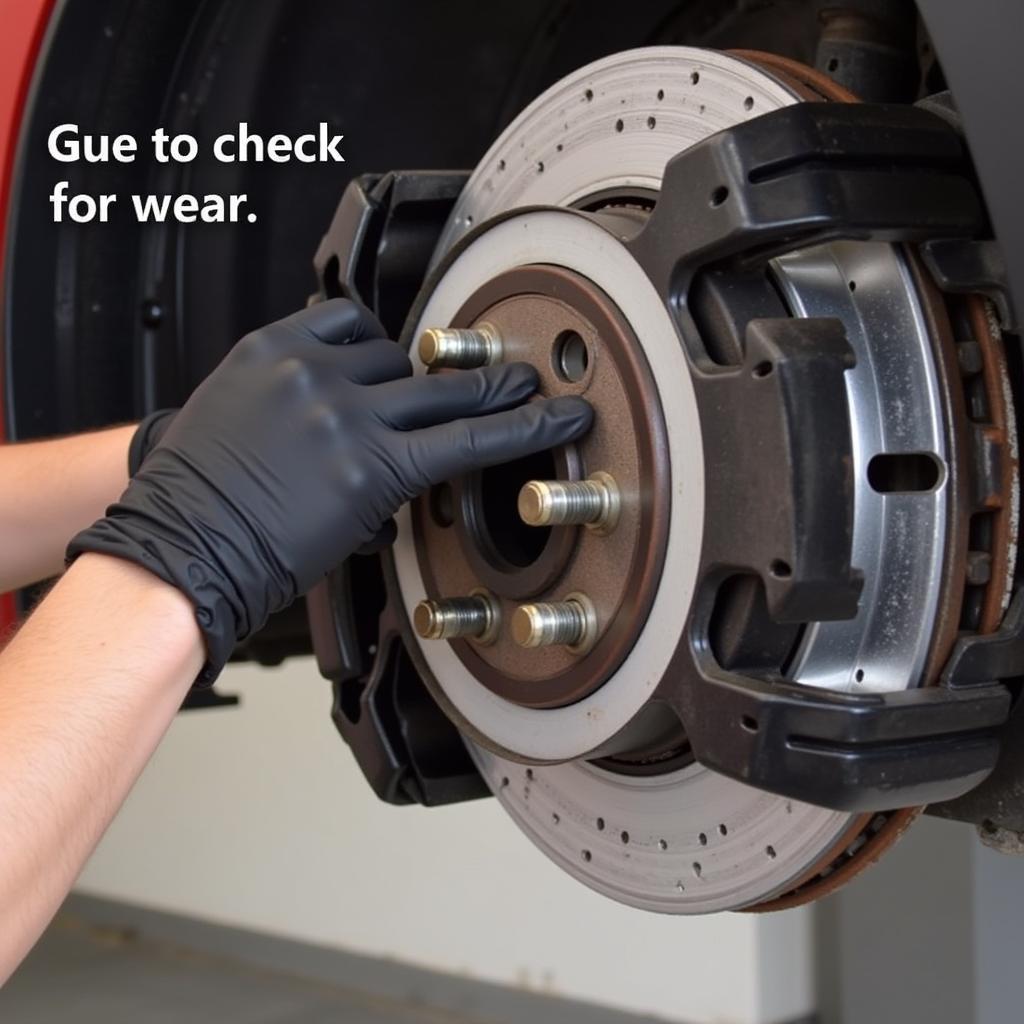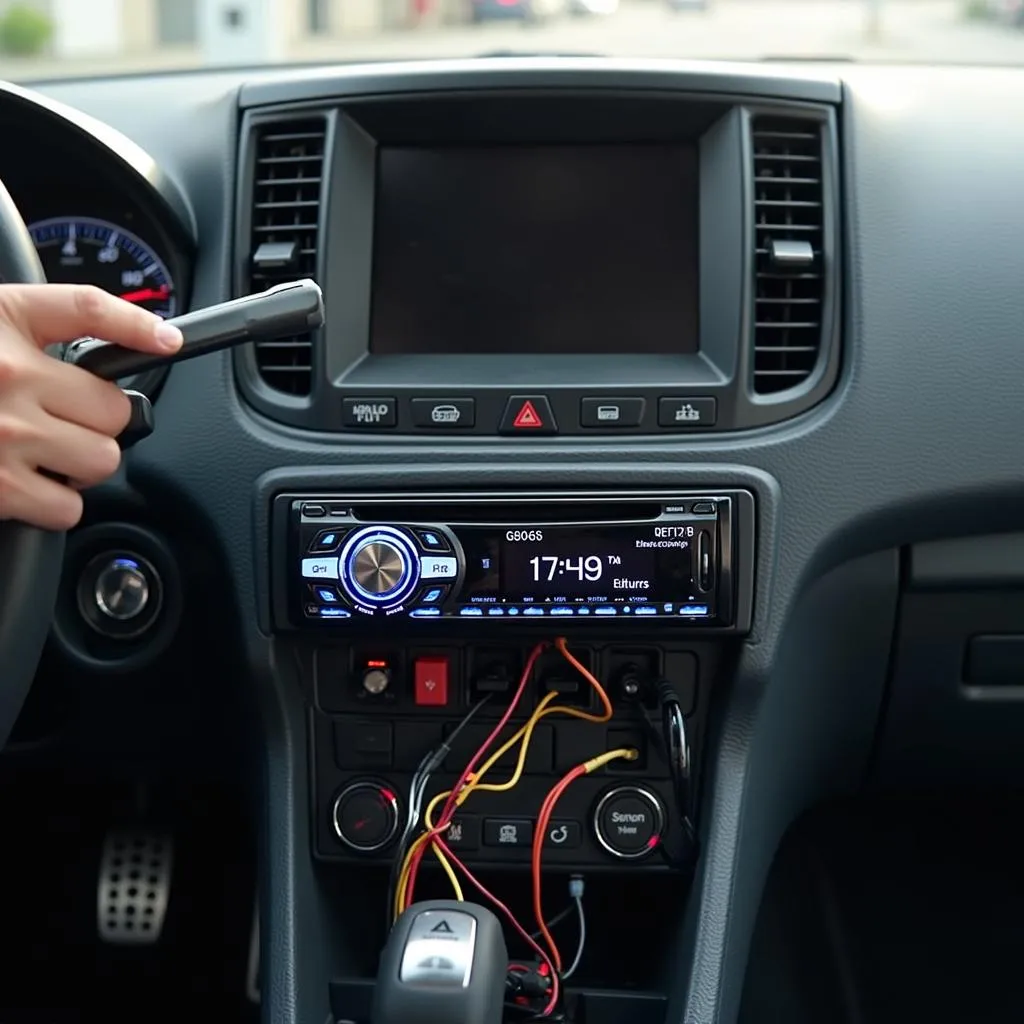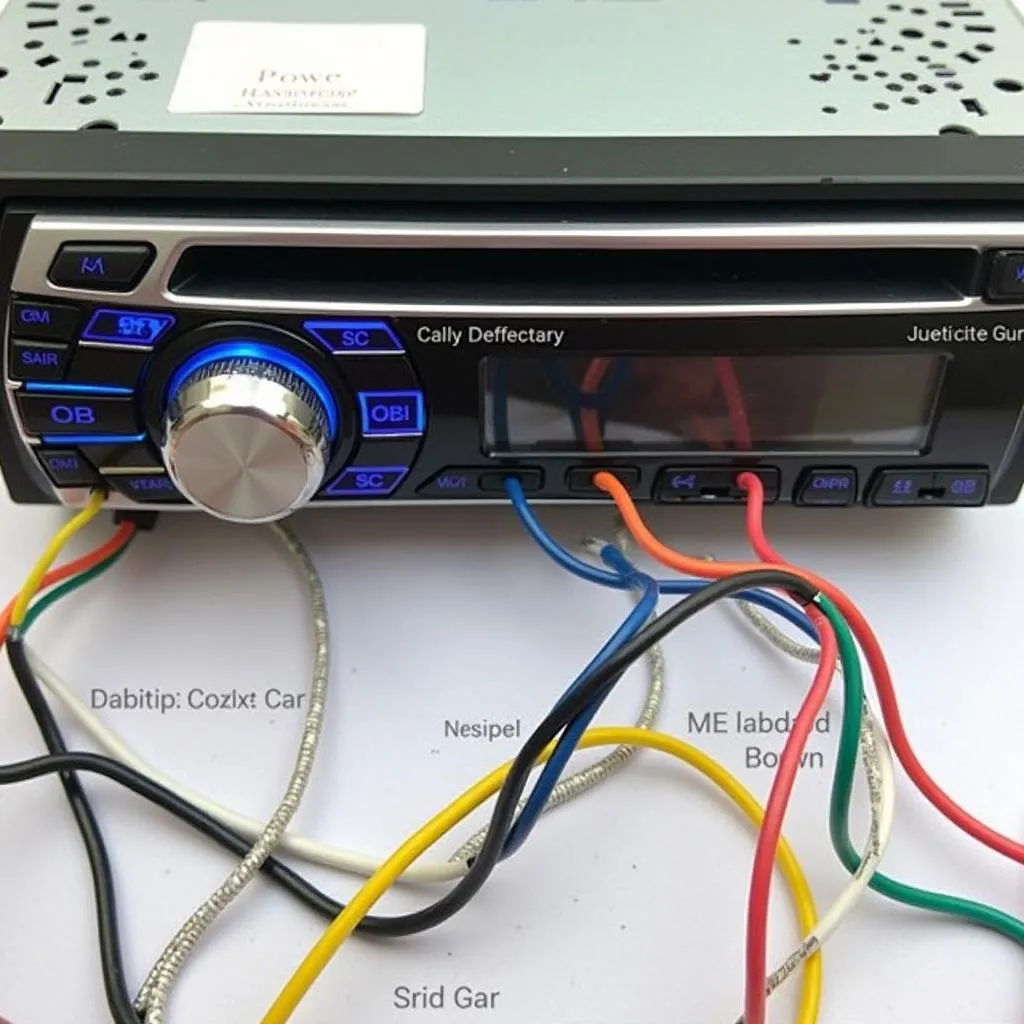A flashing or intermittently illuminated brake pad warning light can be unnerving. It signals a potential issue with your vehicle’s braking system, even if it doesn’t always stay on. This article delves into the common causes of a brake pad warning light that comes on and off, providing insights on troubleshooting and addressing the problem.
Understanding the Brake Pad Warning Light
The brake pad warning light, often symbolized by a circle with parentheses and exclamation mark or the word “BRAKE,” serves as your car’s early warning system for brake pad wear. When the light turns on, it indicates that the brake pads have worn down to a point where they require attention.
Why Does the Brake Pad Warning Light Come On and Off?
While a consistently illuminated brake pad warning light typically points to worn brake pads, an intermittent light can be caused by several factors:
- Worn Brake Pad Sensor: Most modern vehicles have brake pad wear sensors, small metal tabs embedded within the brake pad material. As the brake pads wear down, the sensor makes contact with the brake rotor, completing a circuit and triggering the warning light. A loose or malfunctioning sensor can cause the light to flicker or turn on and off intermittently.
 Brake Pad Wear Sensor
Brake Pad Wear Sensor
-
Low Brake Fluid Level: Brake fluid is crucial for transmitting force from the brake pedal to the wheels, enabling your car to stop. If the brake fluid level is low, it can trigger the brake pad warning light. A slight leak or fluctuating fluid level can cause the light to behave erratically.
-
Faulty Brake Light Switch: The brake light switch, activated when you press the brake pedal, also plays a role in illuminating the brake pad warning light. A malfunctioning switch can disrupt the signal, leading to an inconsistent warning light.
-
Wiring Issues: Electrical problems, such as loose connections, damaged wires, or corroded terminals within the braking system, can disrupt the signal to the warning light, causing it to flicker.
 Corroded Brake System Wiring
Corroded Brake System Wiring
- Faulty ABS System: While less common, issues with the Anti-lock Braking System (ABS), such as a failing ABS sensor, can also trigger the brake pad warning light in some vehicles.
What to Do When Your Brake Pad Warning Light Comes On and Off
Ignoring a flickering brake pad warning light can have serious consequences. Here’s a step-by-step guide on what to do:
-
Check Your Brake Fluid Level: Locate the brake fluid reservoir under the hood and check the fluid level. If it’s low, add the appropriate brake fluid as specified in your car’s owner’s manual.
-
Inspect Your Brake Pads: If you’re comfortable with basic car maintenance, visually inspect your brake pads. Look for signs of significant wear, such as thin pad material or a deep groove near the wear indicator. If you’re unsure, consult a mechanic.
 Inspecting Brake Pads for Wear
Inspecting Brake Pads for Wear
- Seek Professional Diagnosis: If the brake fluid level is normal and the brake pads appear to have sufficient life, it’s crucial to have your vehicle diagnosed by a qualified mechanic. They can pinpoint the exact cause of the intermittent warning light using diagnostic tools.
Remote Software Solutions for Brake Pad Warning Light Issues
In some cases, the root cause of a brake pad warning light issue can be diagnosed and addressed remotely using advanced automotive software solutions. These services, often offered by specialized automotive technology companies, allow technicians to:
-
Read and Analyze Diagnostic Trouble Codes (DTCs): By connecting to your vehicle’s onboard computer remotely, technicians can retrieve and interpret diagnostic trouble codes related to the braking system.
-
Perform Software Updates: Occasionally, outdated software in your car’s electronic control unit (ECU) can cause glitches, including issues with the brake pad warning system. Remote software updates can rectify these problems.
-
Conduct Remote Diagnostics: In certain situations, technicians can perform remote diagnostics on your braking system using specialized software and your vehicle’s data connection. This can help identify issues related to sensors, wiring, or other electronic components.
Conclusion
A brake pad warning light that comes on and off should never be ignored. While it might not always indicate immediate danger, it signals a potential issue within your braking system. By addressing the problem promptly, you prioritize your safety and potentially prevent more costly repairs down the road.
Remember, consulting a qualified mechanic or exploring remote software solutions can provide the expertise needed to diagnose and resolve the underlying cause of a flickering brake pad warning light.


